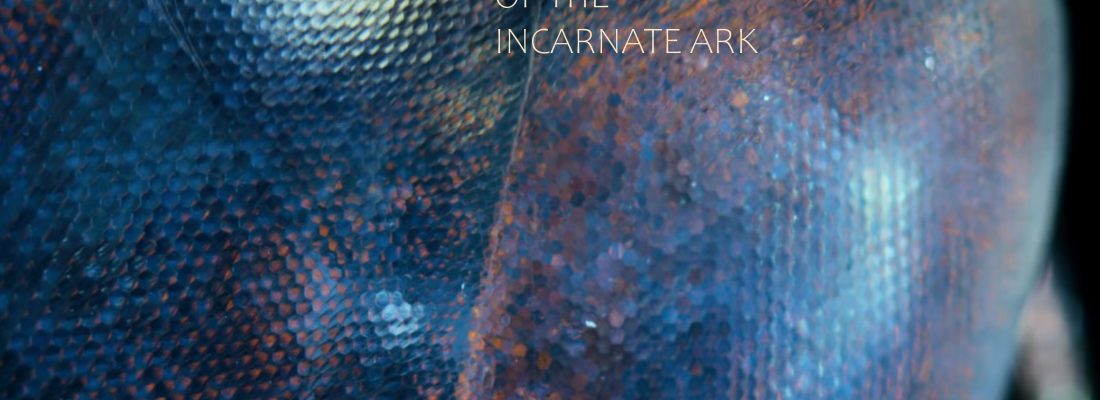
In the present study, three parts (Part I, Part II and Part III), ranging from research and reflections to fictional stories as part of a graphic novel, deal with the hypothetical development of modern society towards a hybrid society in the near and distant future. The final result of this work is a self-written and illustrated graphic novel, accompanied by a collection of sketches and ideas for the book.
Part I describes the first three steps at the beginning of the semester. Texts, excerpts from books, essays and films were distributed in groups as starting points for working on a topic and individually worked out and presented in those groups. The first part of the research – at this point in time, the idea of writing a graphic novel was by no means fixed, nor was the plot – was an excerpt from Staying with the trouble.
Making kin in the Cthulucene, a collection of essays by Donna Haraway.
This is about a scenario of ethical coexistence of all species for future generations. Her suggestion is to no longer tie kinship to biological lines, but to make it cross-species. “Make kin, not babies!” is the battle cry underlying her book. Haraway says that we must overcome the Anthropocene, the age marked by destructive individualism, in favor of a friendlier era of coexistence, the Cthulucene.
The second proposed part of the research was the film Story Telling for Earthly Survival by Fabrizio Terranova, a film built from a mixture of biographical material of Donna Haraway’s life and her philosophical ideas. The film sketches Haraway’s life, starting with stories from her rather conservative childhood and ending with her unusual living with her ex-husband, his new life partner and their dogs. It was at this time that she first started to think a lot about alternative forms of living together, her theories of kinship without biological reproduction and possible future societies.
The third part of the research was the chapter An Evil Ecology from the book The Illusion of the End or the Strike of Events by Jean Baudrillard. After Baudrillard speaks about man and his environment and says “we are turning more and more into garbage”, he also cynically discusses the Biosphere II experiment.
He compares it with Disney, with an Americanized idea and staging of a fake environment, which according to him is only suitable as an attraction, less as an honest experiment. Through such experiments nature loses its right to live, since it is condemned to death – at the same time
death shall be overcome by an artificiality:
“In former times, the dead were embalmed for eternity, today the living are being embalmed with life in their lifetimes.”
Influenced by the “Make kin, not babies!” The idea and the idea of a possible future of hybrid societies by Donna Haraway, the critical consideration of an end-time scenario caused by humans as well as its possible “overcome” by Jean Baudrillard, was researched more and more in the direction of hybrids and science fiction out of own interest. What if, instead of a change in the environment, or a preservation as in a Biosphere II, man changes? What is the reason for this sacrosanct sanctity of the human body? Part II of this work is the further examination of the topic of hybrids and hybrids in art, as well as the origin of the concept and the handling of hybridity in science, literature and film.
In art, the hybrid is a topic that goes back a long way, which has its place in contemporary art and very well has potential for the future, as Donna Haraway also predicts. The aesthetics of such a hybrid, as well as the background story or generally the life a hybrid could lead, is the main consideration and at the same time the starting point of the following work and further central content of a graphic novel with the provisional title Stories of the Age of the Incarnate Arc.
Part III is the creative part of the work, so to speak. Based on these different researches and influences (which will continue to be worked on in parallel), we have now begun to write stories in which a future hybrid society is to play the leading role, underpinned by different types of presentation.
Also interesting is the way the environment and architecture will be treated in the future – in which buildings will these hybrids live? What happens to the environment as it was before – is it even recognizable anymore?
So in the next few months we will continue to work on speculations of a possible Cthulucian. In the last part of the graphic novel, genetic manipulation and biohacking play a leading role in the doomsday setting, influenced by the idea of independent scientists propagating democratic science in a (rapidly growing) community and – integrated in the stories – searching for new solutions for the survival of several species.
The first story describes the situation of an apocalyptic scenario in which mankind finally begins to extinguish itself through its own misconduct. Due to a failed experiment to dim the sun a little bit because of a supposed climate control, the whole earth’s atmosphere darkens – the electricity, which at this point in time (we are about 100 years in the future) is generated almost 100% by solar energy, fails. The remaining fossil fuels are fought for and exploited in the course of a last 100-year world war.
In parallel to the experiment, which seems to put the entire population of the Earth, including animals and plants, at risk by attempting to darken the atmosphere, a team of scientists decided to use the CRISPR process to create a new type of hybrid, which should be able to withstand the future conditions on this planet like an ark made flesh and save the species from extinction as a fused, adapted being.
